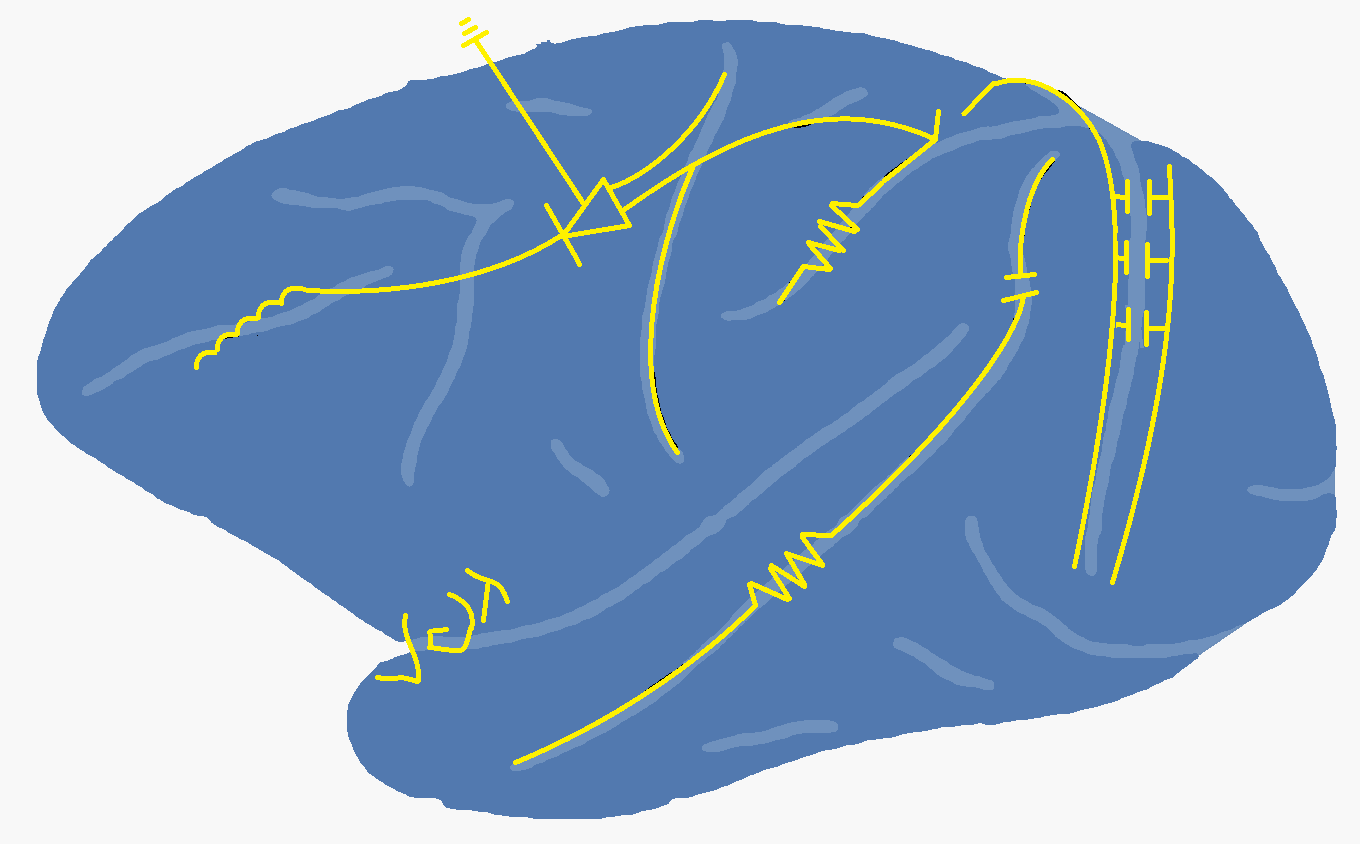Projects and Experience
Over the course of my academic and professional career I have worked on a wide variety of projects and been a part of many organizations. I worked in 4 different labs performing independent research, I've founded a startup company, MultiModal Health, and I've started new outreach and educational initiatives in both academic and extracurricular organizations. I've been a leader and a team member. I've mentored new students, new researchers, and fellow aspiring leaders. I like challenges in my work, which often means I'm always seeking out the next step in my career.
Below are a set of short descriptions of projects I've worked on in the last few years. They are ordered in level of depth - the first few projects are recent and impactful, whereas the later projects are either older work or side projects. Each project title links to a more in-depth description of the project.
Quick Links:
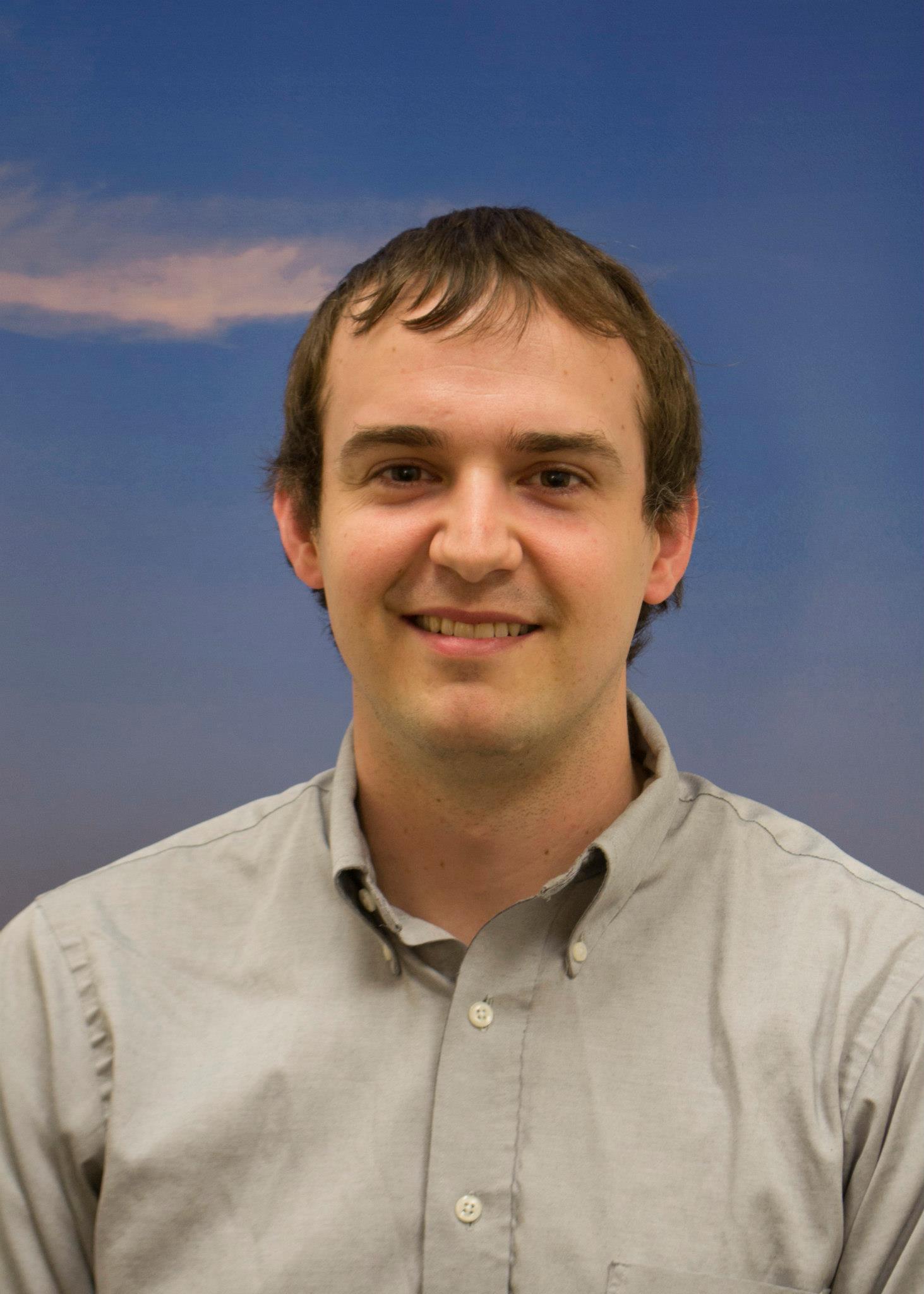
- MultiModal Health Incorporated: Creators of vHAB : Research/ Startup:
- Volitional Control of Brain Signals : Research
- Wireless Feeder for Behavior Studies : Engineering
- CSNE Hackathon Creator/Organizer : Leadership
- Assessment and Training for Hemispatial Inattention Using Eye Tracking : Research
- LGA Visualization for Micro Scale Logic Gate Design : Engineering
- Improving the Biocompatibility of Titanium : Research
- Modeling Drug Delivery : Research
- Synthesis and Attachment of Proteins to Hydrogels : Research
- Event Planner for Residence Hall Association : Leadership
MultiModal Health Incorporated: Creators of vHAB

Dates: Ongoing Location: Seattle, WA Type: Startup Venture
Short Description: MultiModal Health aims to improve health outcomes through sensing and reporting of data. Our first product, vHAB, is a virtual rehabilitation platform that helps patients regain fine motor skills to lead autonomous lives again. As the co-founder and lead software engineer, I play an integral role in the project's development. Full information about the project can be found at our website. For specifics on my role in developing vHAB (pre-company formation), click the project title above.
Volitional Control of Brain Signals
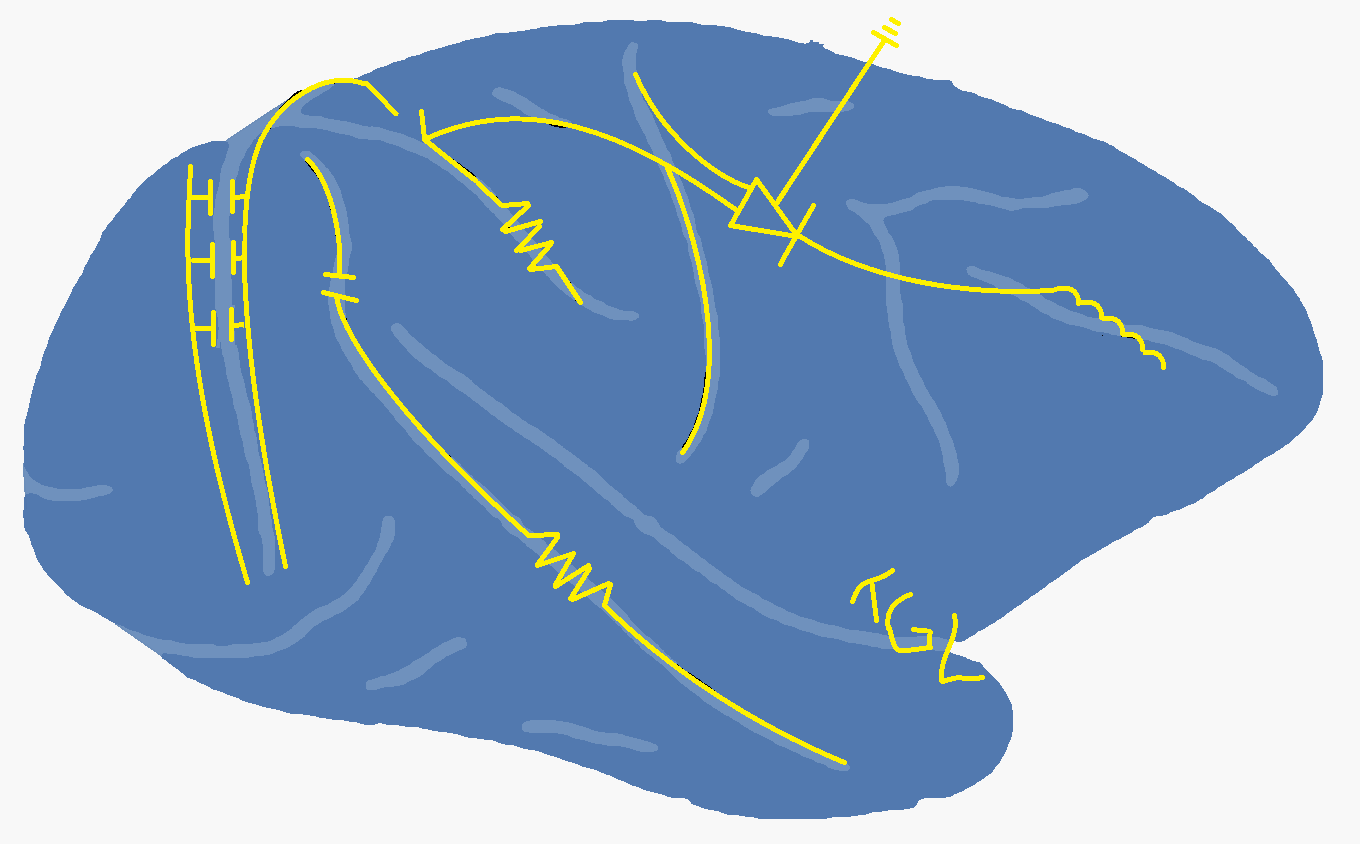
Dates: 2011-2016 Location: University of Washington Type: Ph.D. Research
Short Description: Brain-computer-interfaces aim to help persons with difficulty moving or communicating regain the lost function. In my work, I study multiple areas of the brain in attempts to create better control paradigms for these systems. Through this work I perform multiple roles, including data analysis, hardware/electrode manufacturing, animal training, surgery, and mentoring.
Wireless Feeder for Enhanced Studies in Neuroscience
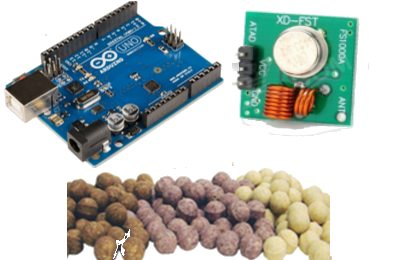
Dates: 2012-2016 Location: University of Washington Type: Ph.D. Research
Short Description: Traditional neuroscience techniques limit the applications of long-term studies due to subject requirements and personelle resources. I have created and tested a wireless feeder system that rewards subjects while they are behaving naturally: allowing for long term study during natural behavior. The feeder consists of multiple custom parts/software and a few low-cost hacks. To further examine behavior, I have created robust tracking software using the Microsoft Kinect to track subjects in their home environments
CSNE Hackathon Creator/Organizer

Dates: October 2014 Location: University of Washington Type: Leadership
Short Description: The CSNE is a neuroengineering focused research center with a strong education focus. As one of the student leaders of the CSNE, I set out to create an additional way to engage other students with the principles of neuroengineering. With the help of my fellow student leaders, I recruited, organized, and executed a weekend long hackathon for students from three different universities.
A Reading Assessment and Training Program for Hemispatial Inattention Using Eye Tracking
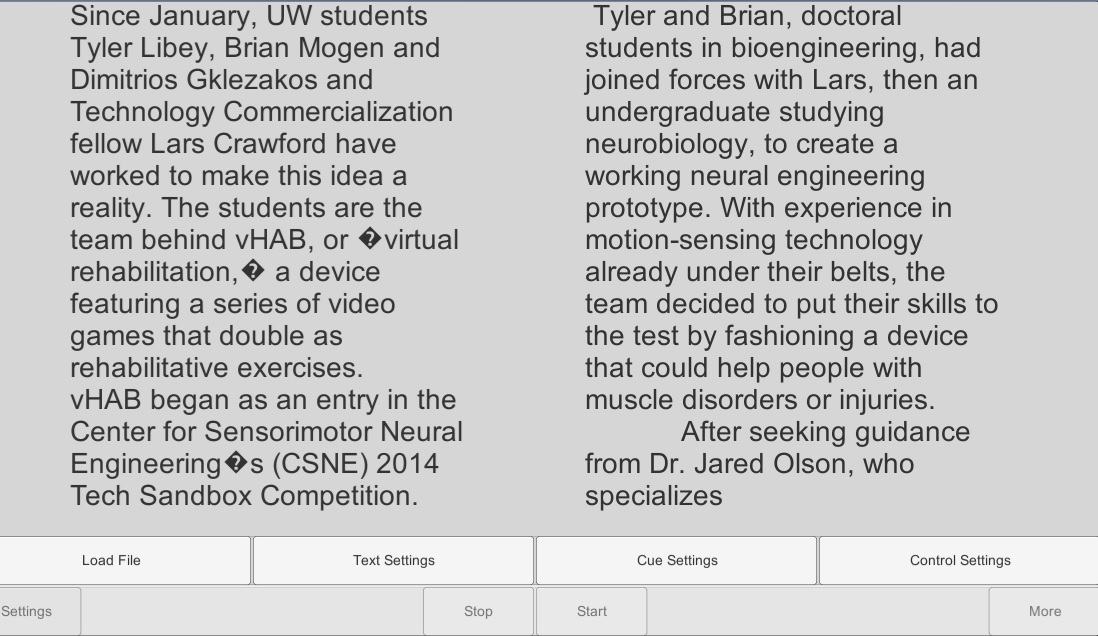
Dates: 2015 Location: University of Washington Type: Research
Short Description: Hemispatial inattention occurs during some brain injuries and affects an individual's ability to pay attention to objects in specific locations of their field of view. This project came out of a collaboration with an occupation therapist with the aim to develop an intervention and measurement tool for hemispatial inattention. Using an off the shelf eye-tracking system, we have created software that provides cues while a patient reads standard text and then determines the severity of the inattention.
LGA Visualization for Micro Scale Logic Gate Design
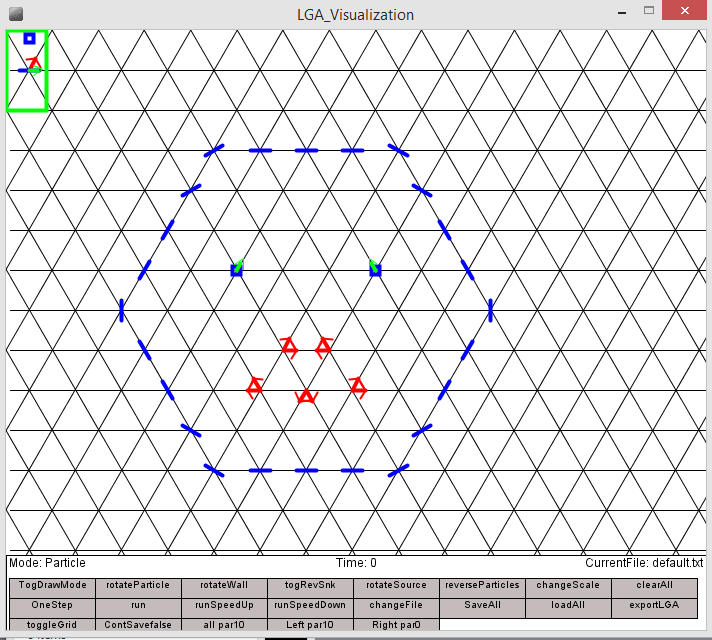
Dates: Fall 2013 Location: University of Washington Type: Course Project
Short Description: During Fall Quarter in 2013 I took a course focused on the physics of computing. One of the large focuses of this course was lattice gas automata (LGA) and its role in in low-energy computing. Throughout the course we were tasked with creating logic gates with LGA based systems with increasing complexity. Instead of doing this by hand, I created a program to simplify the gate creation process - allowing for more complicated gates. Towards the end of the course I distributed my software to the course, alowing them to simplify their final projects. This project was one of my first independent forays into coding. I learned a lot about java and the processing infrastructure through a focused project
Improving the Biocompatibility of Titanium through Atomic Transfer Radical Polymerization (ATRP)

Dates: Summer 2009 Location: University of Washington
Type: Summer Research Experience for Undergraduates
Short Description: Over the summer of 2009 I spend 8 weeks at the University of Washington performing research on Titanium surface modification for enhanced hip implants. The goal of the research was to change the surface reactivity of traditional titanium implants to increase longevity and integration with existing bone. During this short research cycle I gained experience in an entirely differnt research area as the day-to-day work was primarily chemical and materials engineering. At the end of the summer, I presented during a symposium and poster session and wrote up the research for the Journal of Undergraduate Research in Bioengineering.
Modeling Drug Delivery for the Treatment of Orthopedic Infections and Glioblastoma
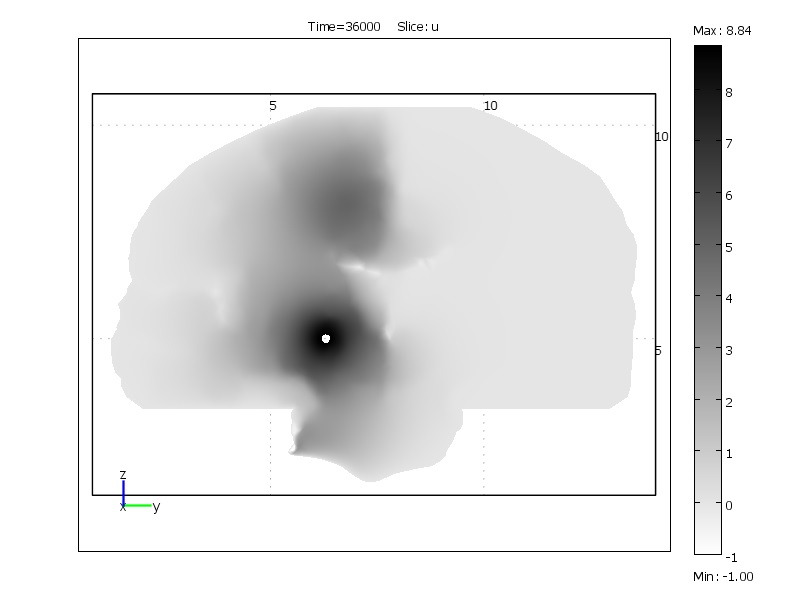
Dates: 2009-2011 Location: Arizona State University
Type: Undergraduate Research
Short Description: During my Junior and Senior years at Arizona State University I worked in the lab of Michael Caplan. This work encompassed a wide variety of mathematical and in-vitro modeling techniques. I began working in the lab modeling drug delivery for the treatment of glioblastoma using a finite element modeling software suite (COMSOL). Eventually, we transitioned to modeling drug delivery of antibiotics for the treatment of orthopedic infections that occur after hip or knee replacement surgeries. This research was my first independed research experience using MATLAB and a variety of image processing packages. This work was presented in multiple poster sessions and symposiums, all culminating in my undergraduate Honors College thesis.
Synthesis and Attachment of Proteins to Hydrogels for Proliferation of Hematopoeitic Stem cells

Dates: 2008-2009 Location: Arizona State University
Type: Undergraduate Research
Short Description: This was my first experience with independent research under the guidance of of Dr. Christine Pauken. The goal of this project was to synthesize a biomaterial to provide a niche for the proliferation of Hematopoietic stem cells without allowing differentiation to occur. In addition to learning protein synthesis and isolation techniques, I gained a fundamental appreciation for research and the scientific processes.
Event Planner for Residence Hall Association

Dates: 2007-2011 Location: Arizona State University Type: Leadership
Short Description: I implemented campus-wide events and smaller dorm-based events that focused on building community, exploring culture, understanding diversity and promoting safe collegiate practices regarding sex and alcohol. In this position I advocated to campus officials on behalf of residents for affordable meal plans, campus safety and hall improvements. Above all else, I had the opportunity to mentor a group of incoming freshman each year and help them succeed academically and professionally.
